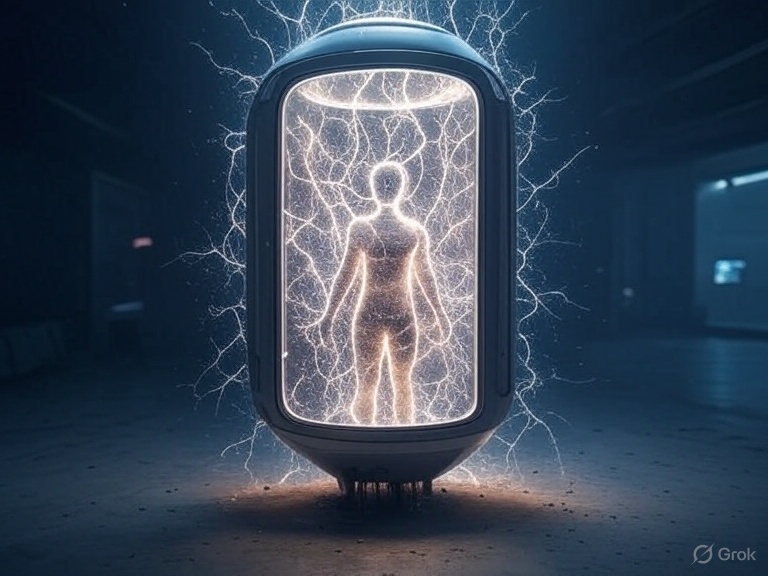Teleportation has long been a staple of science fiction, from Star Trek’s transporters to futuristic thought experiments in physics. But what if teleportation technology actually became real—only with one critical flaw: it was dangerously unstable? Would humanity embrace the risks for the convenience, or reject it as a terrifying gamble with existence itself?
The Promise of Teleportation
In theory, teleportation could revolutionize life on Earth. Imagine traveling from New York to Tokyo in seconds, or shipping goods instantly across the globe without planes or ships. Commutes, logistics, and even space exploration would change forever.
- End of transportation industries – Cars, trains, and airplanes would become obsolete.
- Global economy boost – Trade would happen in seconds, lowering costs and eliminating delays.
- Exploration beyond Earth – Humans could reach Mars or the Moon in the blink of an eye.
But all this potential would come with a frightening caveat—if teleportation were unstable, every use could be a matter of life or death.
Why Would Teleportation Be Unstable?
Teleportation is not just about moving matter—it’s about disassembling particles in one location and reconstructing them somewhere else. That complexity introduces many risks:
- Data Loss During Transmission – If even one molecule is misplaced, the traveler could arrive incomplete.
- Quantum Uncertainty – Rebuilding a person at the atomic level might not guarantee the same consciousness on the other side.
- Energy Overload – Teleportation could demand massive energy, leading to catastrophic failures if interrupted.
- Biological Errors – Small distortions might cause mutations, organ failures, or even fusion with surrounding objects.
In short, teleportation could easily shift from miracle to nightmare in a fraction of a second.

The Human Risks
If teleportation technology was unstable, the dangers would be immediate and deeply personal:
- Physical Disintegration – A malfunction could scatter particles, leaving the person lost forever.
- Merged Identities – Two people teleporting at once might accidentally fuse into a horrifying hybrid.
- Cloning Dilemmas – Errors might create duplicates of travelers, raising ethical and legal questions.
- Psychological Trauma – Even successful travelers could experience existential dread—are they the “same person,” or just a copy?
Every teleport would be a gamble, like rolling dice with one’s very existence.
The Impact on Society
Even with risks, many people might still use unstable teleportation, just as humans accept dangers in cars, planes, or surgeries today. But the consequences would be vast:
- Restricted Use – Governments might regulate teleportation to emergencies or military operations.
- Black Market Travel – Underground networks could offer teleportation services for those willing to risk instability.
- Economic Disruption – Traditional shipping and travel industries would collapse, while teleportation companies would dominate despite safety issues.
- Cultural Shifts – Families, relationships, and businesses would change as distance became meaningless—though at great personal risk.
Teleportation might become the ultimate “Russian roulette” of modern life.
The Ethical Dilemmas
The unstable nature of teleportation would raise profound ethical questions:
- Consent and Responsibility – Should people be allowed to risk their lives for convenience?
- Cloning Rights – If duplicates are created, do they count as humans with rights?
- Military Use – Could unstable teleportation be weaponized to send enemy soldiers into dangerous environments—or disassemble them mid-transport?
- Philosophical Questions – If teleportation destroys your body and rebuilds it elsewhere, is the “you” who arrives truly the same consciousness?
These dilemmas would blur the line between technology, identity, and morality.
The Role of Governments and Scientists
Governments would be torn between banning teleportation for safety and embracing it for strategic advantage. Scientists would face pressure to stabilize the technology, but every failure could spark public outrage or fear.
Some nations might use teleportation in secret, while others prohibit it entirely. International disputes could emerge if unstable teleportation caused mass casualties or cross-border accidents.
Could Humanity Ever Perfect It?
Over time, researchers might develop safeguards:
- Redundant Reconstruction – Multiple backups of a person’s molecular data to prevent loss.
- Energy Stabilizers – Fail-safe power systems to avoid mid-transport collapse.
- AI Monitors – Artificial intelligence overseeing each teleport to reduce errors.
But even then, the psychological fear of becoming “data” might remain, making teleportation the most controversial technology in human history.
Conclusion
If teleportation technology was real but dangerously unstable, it would be both humanity’s greatest dream and darkest nightmare. While it promises instant travel, global unity, and endless exploration, the risks of disintegration, cloning, or existential loss would weigh heavily.
Ultimately, teleportation in this unstable form might reveal more about human nature than technology itself. Would we risk everything for speed and convenience—or would we decide some distances are best left traveled the old-fashioned way?